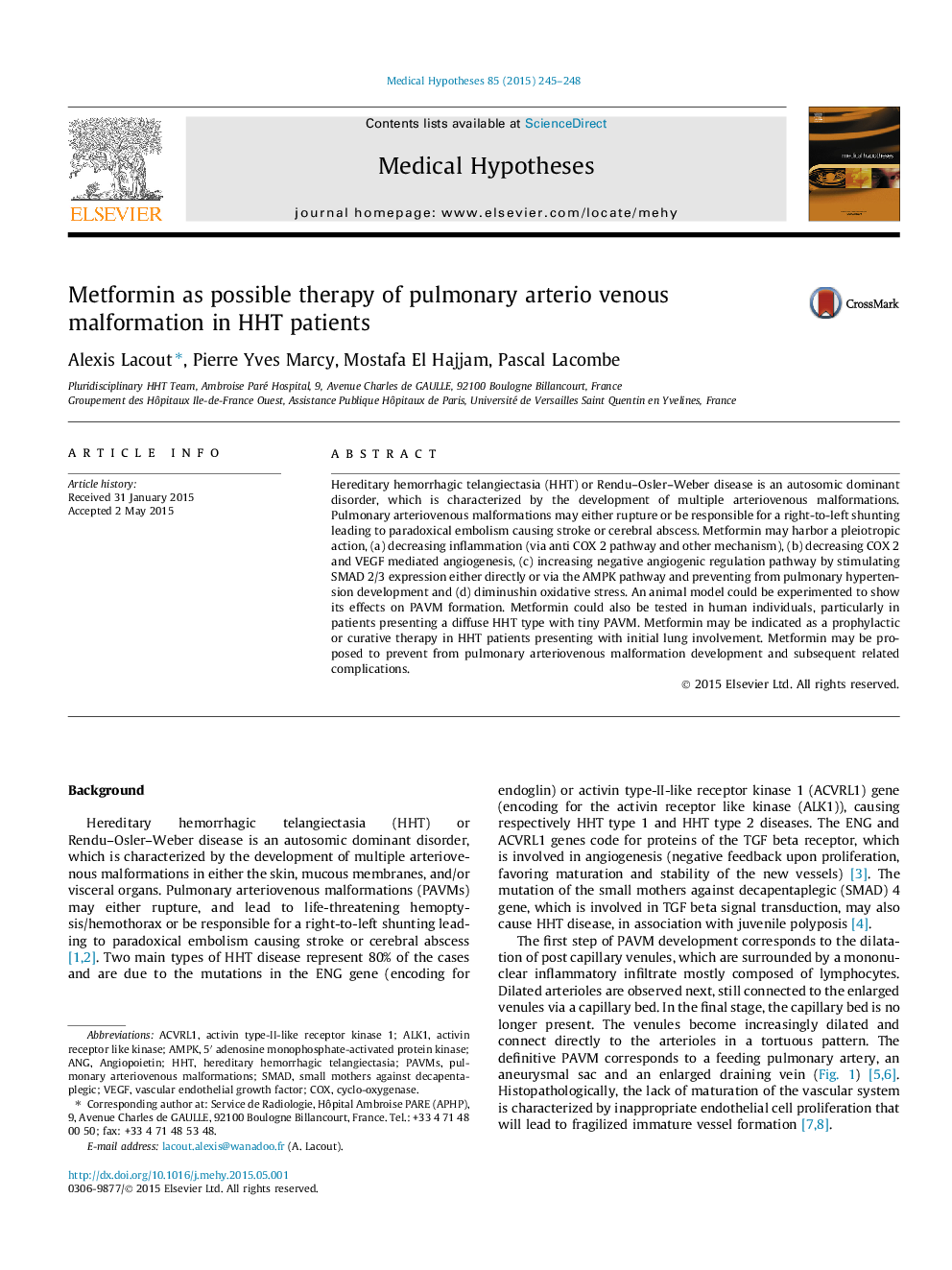| Article ID | Journal | Published Year | Pages | File Type |
|---|---|---|---|---|
| 5810942 | Medical Hypotheses | 2015 | 4 Pages |
Hereditary hemorrhagic telangiectasia (HHT) or Rendu-Osler-Weber disease is an autosomic dominant disorder, which is characterized by the development of multiple arteriovenous malformations. Pulmonary arteriovenous malformations may either rupture or be responsible for a right-to-left shunting leading to paradoxical embolism causing stroke or cerebral abscess. Metformin may harbor a pleiotropic action, (a) decreasing inflammation (via anti COX 2 pathway and other mechanism), (b) decreasing COX 2 and VEGF mediated angiogenesis, (c) increasing negative angiogenic regulation pathway by stimulating SMAD 2/3 expression either directly or via the AMPK pathway and preventing from pulmonary hypertension development and (d) diminushin oxidative stress. An animal model could be experimented to show its effects on PAVM formation. Metformin could also be tested in human individuals, particularly in patients presenting a diffuse HHT type with tiny PAVM. Metformin may be indicated as a prophylactic or curative therapy in HHT patients presenting with initial lung involvement. Metformin may be proposed to prevent from pulmonary arteriovenous malformation development and subsequent related complications.
